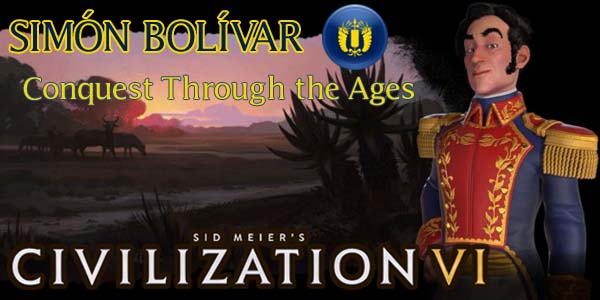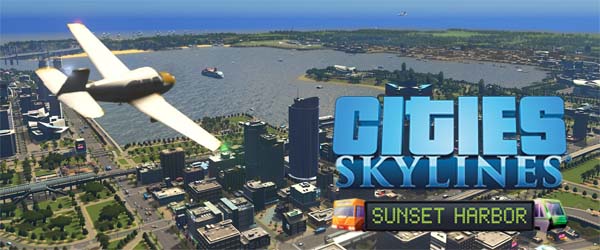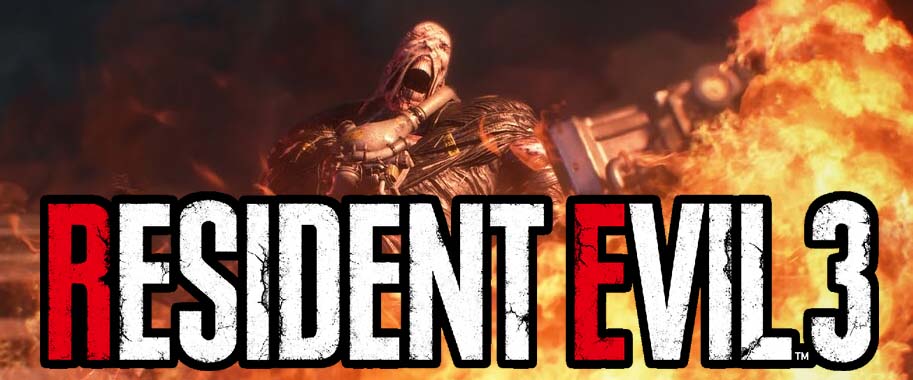
March's announcement that the NFL had granted a license to 2K to make "non-simulation" NFL football games gave many in the football gaming community hopes that the monopoly that EA and Madden have enjoyed for so long would soon come to an end. Well, sadly, that won't be happening anywhere near as soon as we may have hoped -- if ever. Yesterday, EA and the NFL agreed to extend the "simulation football" exclusivity deal through 2026.
There was hope that the NFL was perhaps becoming unsatisfied with Madden's declining review scores and slumping sales, and that they were opening a door to grant a simulation license to 2k when the EA exclusivity deal expired in 2021. But that won't be happening now, unless EA does something egregious enough to warrant the NFL backing out of the contract or claiming that EA is in breach of contract. I wouldn't hold my breath for that though.
By the time this extended exclusivity contract expires (in 2026), EA will have enjoyed a lack of competition for 22 years, I will be older than 40, and an entire generation of adults (old enough to legally drink alcohol, smoke cigarettes, and gamble) will have grown up without ever knowing an NFL video game other than Madden, because the last NFL-licensed simulation football video game was released to store shelves before they were born. [More]

Well, Firaxis is apparently not done with Civilization VI. They will be releasing new DLC packs with new game modes, new civilizations, and new leaders through March of 2021. The first such "New Frontiers" pack released in May of 2020 and included two new civilizations: the Maya and Gran Colombia. As usual, I try to give priority for my strategy guides to civilizations and leaders who have never been depicted as playable in the Civilization games before. In this case, we have a civilization that has been in previous games with a leader who has not, and a leader who has been in a previous game attached to a civilization that has not. I'm going to give priority to the leader who seems more straightforward to play, so that I can get this guide out to my loyal fans as quickly as possible. I will thus start by covering Simón Bolívar of Gran Colombia. Simón Bolívar appeared as a leader of New Spain in Civilization IV: Colonization, but has never been included as a leader in a mainstream Civilization game. And Gran Colombia is making its first appearance in the series as a playable faction.

For future releases that may include multiple leaders, I may put up polls on Patreon to let my Patrons decide which civ or leader to cover first. I may also put up polls asking if my Patrons would prefer that I make guides focused on the new game modes. So if you would like to vote on which content you would prefer to see sooner, I hope you'll consider supporting the creation of this content on Patreon.
Following Simón Bolívar's victory at New Granada in the Colombian War of Independence against Spain, political leaders of the colonies in Colombia and Venezuela established the Republic of Colombia (now known as "Gran Colombia") -- even though the War of Independence was still ongoing. The federal republic divided its territory into 12 "departments", each headed by an intendant (some of whom were also commandante generals in the military), with the nation as a whole being governed by an executive branch with a president and vice president. The country only survived 12 years before dissolving over in-fighting between federalists and centralists in its ruling parties.

Gran Colombia's president, Simón Bolívar, had a vision of all the former Spanish and Portuguese colonies of Latin America being independent republics that cooperated in a league (similar in principle to the modern-day European Union) with a centralized parliamentary assembly and unified policy towards European colonial powers. The treaty was only ratified by Gran Colombia, and Bolívar's dream faded. A few years later, he became ill and died of tuberculosis, and his nation of Gran Colombia died the following year. Before he died, it is said that Bolívar stated that "America is ungovernable", as he became jaded towards the end by all the bickering and political in-fighting that had dominated Gran Colombia's brief existence. Though he failed to unite the entirety of Latin America, his prominent role in liberating Latin American countries from Spanish rule has him regarded as a father figure of many South American countries. The nations of Bolivia and the Bolivian Republic of Venezuela are named in his honor, and their currencies are know (respectively) as "boliviano" and "bolívar".
DISCLAIMER:
Civilization VI is still a "living game". Strategies for the game (and for specific leaders and civs) may change as Firaxis applies balance patches, introduces new features, or expands the game through further DLC or expansion packs, or as the Civ community discovers new strategies or exploits. As such, the following strategy guide may change from time to time. I will try to keep it up-to-date, and will make notations whenever changes are made. I'll also post links in the official 2K forums and CivFanatics, where I'll also report any changes made. If possible and practical, I will try to retain the original content of the strategy for posterity.
I welcome any feedback or suggestions that readers wish to offer. Feel free to post on the linked forums, or by posting a comment at the bottom of the page.
This guide is up to date as of the release of the "New Frontiers" Maya and Gran Colombia DLC pack (May 2020) (ver. 1.0.1.501)
Simón Bolívar is built to be an aggressive leader in Civilization VI who should use his units' extra movement, and his free Commandante Generals each era to wage lightning warfare against his enemies.
... [More]
60ba8366-dbc5-406e-9e72-e0cb73b5b3ce|2|3.0
Tags:Sid Meier's Civilization, Civilization VI, Gran Colombia, Simon Bolivar, campana admirable, ejercito patrioto, commandante general, llanro, hacienda, carabobo, great general, plantation, era, war

I was starting to wonder if maybe Colossal Order was done with Cities: Skylines, or they had moved on to development of a full sequel. After releasing two expansions per year since the game's launch in 2015, we've now gone almost a year between expansions. The last one was the Campus expansion last May. Now here we are with a new Sunset Harbor expansion.
The announcement for this expansion (a mere week before its release) got my hopes up in a similar fashion to the Snowfall expansion. I thought that Sunset Harbor would add a slew of features that I had been longing for in the game for a long time. Sadly, Sunset Harbor disappointed me in much the same way that Snowfall's lack of a seasonal cycle and poor implementation of ski resorts did. Sunset Harbor lacks almost all of the things that I had hoped for, and it continues a trend of Skylines expansions that add new mechanics or content without revising or enhancing existing mechanics or content to utilize the new ideas.
Much like past expansions, Sunset Harbor neglects a lot of seemingly-obvious content.
When I saw the title of the expansion, I thought for sure that this would be the expansion that would finally introduce public beaches! No such luck. There's no public beach area. Sunset Harbor (despite having "harbor" in its title) does not introduce modular passenger and freight harbor areas, or upgrade harbors into a leveled industry like Industries did with agriculture, forestry, ore, and oil. I still can't daisy-chain my harbors to send shipping routes up rivers or canals, despite the fact that the existing passenger ferries and the new fishing industry can. It similarly doesn't convert tourism and leisure into leveled industry or commercial areas.
As always seems to be the case with Skylines expansions, I'm torn between whether I should review the expansion from the perspective of what it actually brings to the table, or from the perspective of failing to meet my own hopes and desires for what the expansion should be.
One of the things that was missing from Industries
Sunset Harbor does, however, check off a couple items from my wishlist. At long last, it has provided a desert biome map! As someone who lives in the American Pacific Southwest, I've long been frustrated by the inability to create a city that looks more like the familiar landscape of my own back yard. Now I finally can. Sadly, it's only one map, but the asset editor that's always been included in the game will allow me to make more if I want to, without having to resort to downloading mods that might destabilize the game.
I've long hoped for a desert biome to be added to the game.
The big feature of this expansion is also a feature that I thought was missing from the Industries expansion. I complained that Industries only added new infrastructure that replaced the existing agriculture, forestry, ore, and oil industries that have always been in the game, and didn't bother to add any new industries. Parklife, by comparison, added a couple new types of parks that hadn't been in the game before, including nature preserves and an amusement park. Personally, I thought that the most obvious option for a new industry to add to Industries would have been a fishing or aquaculture industry. Well, now we have a whole expansion that has added that one idea.
The new fishing industry doesn't follow suit with the Industries expansion industry areas, or the Campus university areas. You don't paint aquaculture areas and then grow them and level them up. There's no complicated production line or logistic element. The different types of fish that you can catch also don't do anything different. There's no fancy factories that consume specific types of fish (like a pizza factory that consumes anchovies), or that combine your fish with other types of fish (like a fish stick factory), or with other industry products to create a more valuable luxury good (like combining fish and seaweed with crops to make sushi).
Aquaculture does not level up or have production lines like other industrial sectors.
Instead, there's a handful of fishing harbors that act as resource-extractors, and then there's exactly two buildings that process or consume them. Your fishing harbors can either sell their fish to a market to be sold directly to consumers, or the raw fish (regardless of type) can be shipped to a factory that processes the fish and distributes them as generic goods to send out to commercial zones. In lieu of either the market or the factory, the fish will be exported to other cities for a small amount of money.
That's it! That's everything that fishing has to offer!
... [More]
I think the last few years have brought us to a bit of an inflection point for open world video games -- which I feel have been in kind of a rut for the better part of the last decade. Long-time readers of my personal blog will probably be very familiar with my complaints. The two core complaints that I've had with this particular game design paradigm are:
- That the map itself rarely feels meaningful as a game space, and instead serves primarily as a convoluted mission-select screen full of time-wasting filler content.
- That the sandboxy nature of the game design means that the world and narrative often feel stagnant (as if in a kind of "limbo").
This blog is mostly a transcript of a YouTube video that I posted.
These problems can be traced back at least to 2001's Grand Theft Auto III, which set many of the conventions of open world games for the next two decades. Companies from Ubisoft to Bethesda, and many others, would copy GTAIII's structure of going to a location on the map to trigger a mission in an aggressively linear, cinematic story, while spending free time on time-wasting filler content that did nothing to move the story forward.
Grand Theft Auto III set many of the standards
for open world games over the past 20 years.
Aside from Ubisoft's Assassin's Creed and Far Cry series, these problems have been present to varying degrees in everything from Skyrim to The Saboteur to Mad Max to Just Cause to The Amazing Spider-Man to Fallout 4 to Metal Gear Solid V, and many more. It started getting to the point that when I would see a game advertise the size of its map, I'd roll my eyes and lose interest. "Great, that's just more wasting my time walking from place to place with nothing meaningful or interesting or challenging to do."
Where you are on the map, where you're going, and how you get there was almost completely irrelevant in these games, which made the map itself (no matter how big and scenic it might be) feel mostly irrelevant. In fact, some games started introducing mechanics that let you bypass the map entirely by letting you fly, glide, or zipline to points of interest without having to engage with the space in between. In the case of Metal Gear Solid V's Afghanistan map, the roads are lined with sheer cliffs, funneling the player along linear paths from enemy outpost to enemy outpost, with practically nothing for you to do in the space between outposts. Even though the stealth action at those outposts was some of the best in the series, I couldn't help but think that Snake Eater provided a much more fulfilling experience of living within an open-ended game world.
I would roll my eyes whenever a game advertised the size of its map or hours of content.
The maps themselves weren't playspaces anymore; they were just the spaces in between towns, dungeons, and set pieces where the actual gameplay would take place. Just point in the direction of a waypoint and walk in a straight line, stopping every minute or so to pick up an umpteenth collectible, or climb an umpteenth tower, or sneak into an umpteenth enemy base and kill the umpteenth recycled mini-boss. Stop me if you've done all this before... A majority of the time with the game was just travelling around the map without any engagement in any gameplay systems or mechanics or strategies, and then playing some rote, recycled filler content to pass the time. And as the maps got bigger and bigger, the filler content just kept multiplying.
...
[More]
abf2cb68-ef06-4e1e-aa8a-4f1527dce74f|1|5.0
Tags:open world, sandbox, game design, map, traversal, obstacle, travel, exploration, cartography, geography, narrative, ludonarrative, Ubisoft, Bethesda, Assassin's Creed, Assassin's Creed IV: Black Flag, Final Fantasy XV, The Legend of Zelda: Breath of the Wild, Red Dead Redemption 2, Marvel's Spider-Man, Firewatch, Miasmata, Sunset Overdrive, Death Stranding, Shadow of the Colossus, Resident Evil

I played the demo of Nemesis that came packaged
with Dino Crisis, but never played the full game.
Right off the bat, I have to say that Resident Evil 3: Nemesis was never my favorite Resident Evil game. In fact, I never even played the whole thing. I played the demo that was included with Dino Crisis (back in the day when game publishers released playable demos before a game even came out). The original Nemesis erred more on the side of fast-paced action, which just doesn't appeal to me as much as the slower, more thoughtful design philosophy of the original Resident Evil, along with Silent Hill and Dino Crisis. This is why I love the original RE and its GameCube remake, why Resident Evil 4 rubbed me the wrong way, and why I never really got into the rest of the Resident Evil franchise beyond the first game. I tried playing all of the Resident Evil games up through 5, but the only one that came close to holding a candle to the masterful original was 2.
So even though I was excited to play Capcom's remake of the PS1 classic, I went in with tempered expectations. If they stayed true to the original, then RE3make (or whatever we're calling it) would be far more high-octane and action-heavy than the Resident Evil 2 remake that was released a mere year ago. As such, I expected that I just wouldn't be quite as into RE3make as I was into Resident Evil 7 or RE2make. I could only hope that it hit some happy medium between RE2make and Resident Evil 4. But that's really just personal preference on my part. Your tastes may vary.
So now that you hopefully understand where I'm coming from, what do I actually think of Resident Evil 3: Nemesis in 2020? Did Capcom learn any lessons from the few mistakes that were made with RE2make?
Resident Evil 3 is more reliant on spectacle action set pieces than on slowly building atmospheric tension.
The different nature of "Hardcore" mode
If you remember my review of Resident Evil 2 remake (and my lengthy YouTube critique), then you know that one of my core issues with that game was the fact that Capcom locked the Ink Ribbon save system behind that game's hard difficulty. Resident Evil 7 actually had the same problem, but it didn't bother me in that game because RE7 wasn't a remake of a game that included Ink Ribbon saves as a core component of its design.
I felt the Hardcore mode and breakable knife were huge design flaws in RE2make.
In summary, the hard mode made death come much swifter in RE2make. Resource-management wasn't as important as skillful aiming and shooting. Instead of taking a bite or two here and there and having to decide when to fill your scant inventory with a healing item just in case (in the original Resident Evil games), RE2make's hardcore mode made you have to heal pretty much every time you took damage because you couldn't survive a second hit. This low tolerance for mistakes and strict punishment for death felt considerably less fair for someone in a first-time playthrough.
The fact that your knife could break and you could literally be stuck with a save file in which you have zero damage-dealing potential certainly didn't help the feeling of fairness in my book.
My recommendation was for Capcom to separate the hard difficulty setting and the hardcore save system into two options. You should be able to chose whether you want to use Ink Ribbons, and then you should also be able to chose whether you want to play the game on easy, normal, or hard difficulties.
Typewriters are still here, but Ink Ribbons are completely absent.
Instead, Capcom opted to just remove Ink Ribbons for its Nemesis remake. Entirely. They are not locked behind hardcore mode. They are not locked behind New Game Plus. Typewriters are still here, but Ink Ribbons are not in the game at all.
... [More]
106af6d6-125a-4641-8a21-bad7e6976528|1|5.0
Tags:Resident Evil, Resident Evil 3: Nemesis, Capcom, Jill Valentine, Carlos Oliveira, nemesis, horror, survival horror, action, ink ribbon, zombie, knife, loot box, micro-transaction, pay-to-win
|

| 12 | | | | | | | 60 | | 11 | | | | | | | 55 | | 10 | | | | | | | 50 | | 09 | | | | | | | 45 | | 08 | | | | | | | 40 | | 07 | | | | | | | 35 | | 06 | | | | | | | 30 | | 05 | | | | | | | 25 | | 04 | | | | | | | 20 | | 03 | | | | | | | 15 | | 02 | | | | | | | 10 | | 01 | | | | | | | 05 |
|